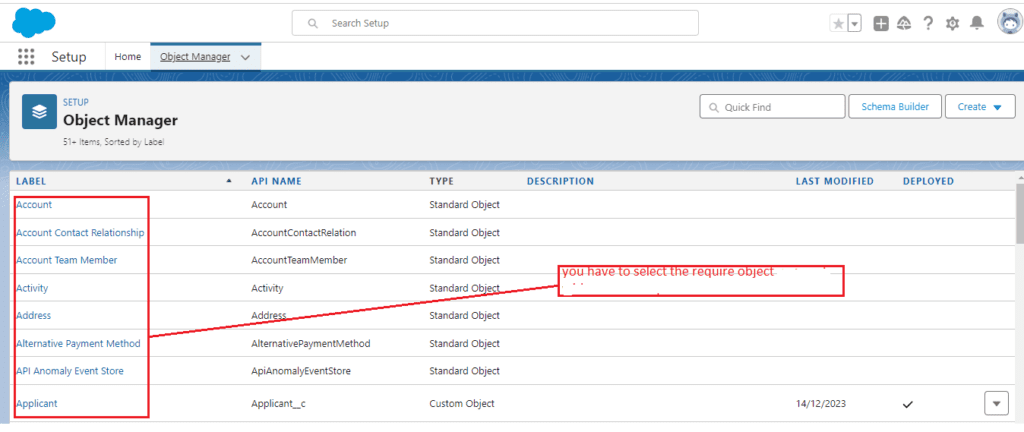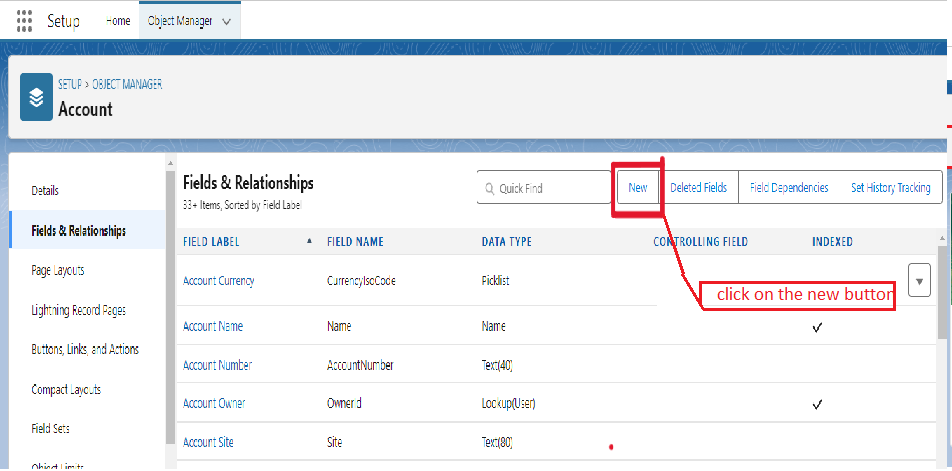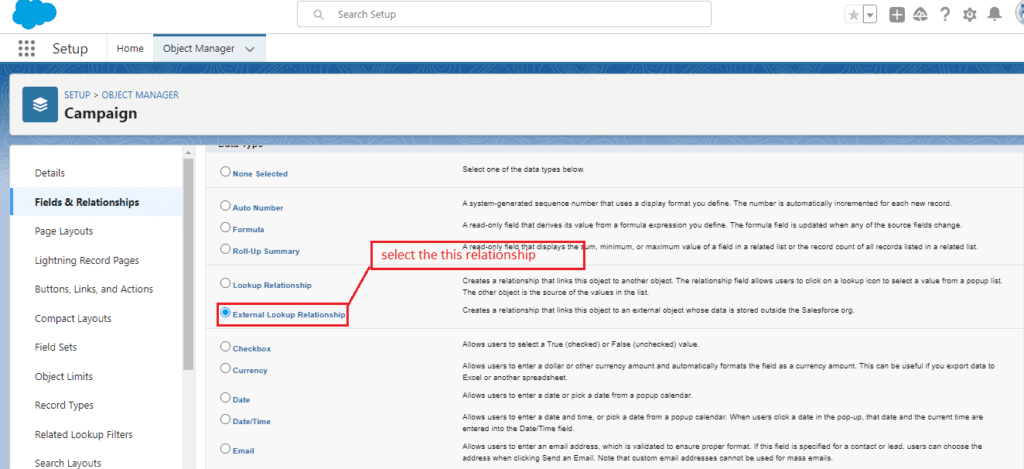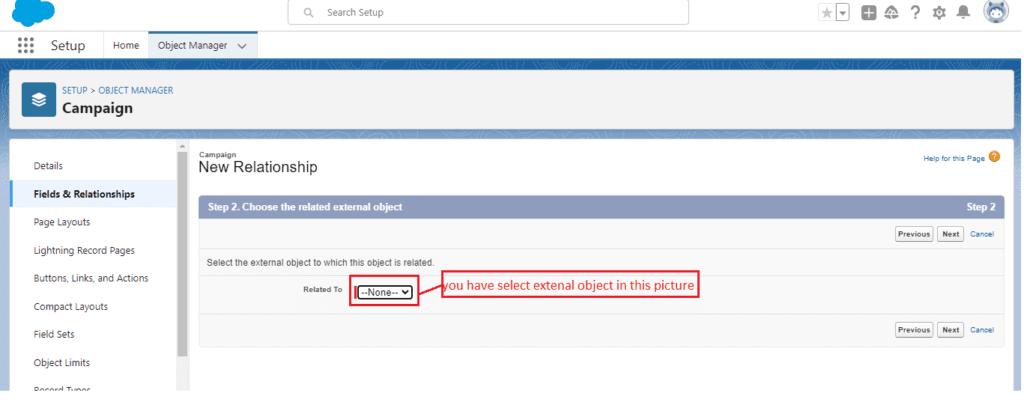In our previous blog post we had discussed about What is Junction Relationship in Salesforce. In these blog post we discuss about What is External Relationships in Salesforce
Contents
- 1 What is External Relationships in Salesforce
- 2 Introduction to External Relationships in Salesforce:-
- 3 Understanding the Concept of External Relationship in Salesforce:-
- 4 Importance of External Relationships in Sales and Customer Success:-
- 5 Overview of How Salesforce Helps Manage External Relationships:-
- 6 Creating an external relationship in Salesforce involves several steps:–
- 7 Establishing External Relationships:-
- 8 Identifying Key Stakeholders:-
- 9 Utilizing Salesforce Tools for Relationship Mapping:-
- 10 Creating a Communication Strategy with External Partners:-
- 11 Nurturing External Relationships:-
- 12 Developing Personalized Interactions with Clients:-
- 13 Leveraging Salesforce for Timely Follow-Ups and Relationship Building:-
- 14 Implementing Feedback Mechanisms for Constant Improvement:-
- 15 Strategies for Maintaining Strong External Relationships:-
- 16 Utilizing Salesforce Reports to Track Relationship Health:-
- 17 Collaborating with Cross-Functional Teams for Integrated Customer Experience:-
- 18 Building Trust Through Transparency and Consistent Communication:-
- 19 Challenges and Solutions in External Relationship Management:-
- 20 Addressing Data Privacy and Security Concerns:-
- 21 Resolving Conflicts and Addressing Customer Issues:-
- 22 Strategies for Managing Multiple External Relationships Effectively:-
- 23 Conclusion:-
- 24 FAQs
What is External Relationships in Salesforce
Introduction to External Relationships in Salesforce:-
strong external relationships is crucial for businesses especially in the realm of Salesforce. This blog post will delve into the concept of external relationships in Salesforce, the importance of nurturing these relationships, and how Salesforce can be leveraged to manage them effectively.
Understanding the Concept of External Relationship in Salesforce:-
External relationships refer to the connections and interactions that businesses maintain with stakeholders outside their organization. In the context of Salesforce, these stakeholders can include customers, partners, vendors, and other external entities crucial to the success of the business.
Importance of External Relationships in Sales and Customer Success:-
Strong external relationships are the foundation of successful sales and customer success initiatives. By fostering positive relationships with customers and partners, businesses can enhance customer retention, drive revenue growth, and create a loyal customer base.
Overview of How Salesforce Helps Manage External Relationships:-
Salesforce provides companies with a comprehensive platform to manage external relationships efficiently. Through tools like Salesforce CRM, businesses can track interactions, analyze data, and customize communication strategies to cater to the unique needs of different stakeholders.
Creating an external relationship in Salesforce involves several steps:–
- Define External Data Source: First, define an external data source in Salesforce. This involves providing connection details such as the URL, authentication method, and other necessary parameters to access the external system or database.
- Set Up External Objects: Create external objects in Salesforce that represent the external data tables or entities you want to access. Define the fields and data types that mirror the structure of the corresponding objects in the external system.
- Create External Relationships: Define external relationships between external objects and standard or custom objects in Salesforce. This involves specifying the fields that establish the relationship between records in Salesforce and records in the external system.


4.Configure Field Mapping: Map fields between the external object and the related Salesforce object to ensure data synchronization and consistency between the two systems. This step ensures that data is properly mapped and displayed in Salesforce.

you have select external object in this page.

5.Test and Validate: Test the external relationship to ensure that data retrieval, synchronization, and operations (such as querying, creating, updating, and deleting records) work as expected. Validate that data is being accurately synchronized between Salesforce and the external system.
6.Handle Security and Access Controls: Configure security settings and access controls to restrict or grant access to external data based on user roles, profiles, or permissions sets. Ensure that appropriate security measures are in place to protect sensitive information.
7.Monitor and Maintain: Regularly monitor the external relationship for any issues or discrepancies in data synchronization. Maintain the connection by updating connection details or making adjustments as needed to accommodate changes in the external system.
By following these steps, you can effectively create external relationships in Salesforce to integrate external data sources and enhance the functionality of your Salesforce environment.
you want to know more about What is External Relationships in Salesforce click here
Establishing External Relationships:-
To build strong external relationships in Salesforce, it is essential to follow a strategic approach that includes identifying key stakeholders, utilizing Salesforce tools for relationship mapping, and creating effective communication strategies.
Identifying Key Stakeholders:-
The first step in establishing external relationships is identifying key stakeholders who play a significant role in the success of the business. These stakeholders can include customers, partners, suppliers, and distributors.
Utilizing Salesforce Tools for Relationship Mapping:-
Salesforce offers a variety of tools that can help businesses map their relationships with external partners. By utilizing features like Salesforce Maps, businesses can visualize their network of contacts, identify key connections, and optimize their engagement strategies.
Creating a Communication Strategy with External Partners:-
Effective communication is the cornerstone of successful external relationships. Businesses can use Salesforce to create personalized communication strategies tailored to the preferences and needs of their external partners. By delivering targeted messages at the right time, businesses can strengthen their relationships and drive better outcomes.
Nurturing External Relationships:-
Once external relationships are established, it is crucial to nurture them by developing personalized interactions, leveraging Salesforce for timely follow-ups, and implementing feedback mechanisms for continuous improvement.
Developing Personalized Interactions with Clients:-
Personalization is key to fostering strong external relationships. By understanding the unique needs and preferences of each client, businesses can tailor their interactions to create meaningful connections and build trust over time.
Leveraging Salesforce for Timely Follow-Ups and Relationship Building:-
Salesforce’s automation capabilities can streamline follow-up processes and ensure that businesses stay connected with their external partners. Through features like automated reminders and alerts, businesses can maintain regular communication and strengthen their relationships proactively.
Implementing Feedback Mechanisms for Constant Improvement:-
Feedback is essential for improving external relationships and driving long-term success. By collecting feedback from external partners through surveys, reviews, and direct communication, businesses can identify areas for improvement and make necessary adjustments to enhance the overall relationship experience.
Strategies for Maintaining Strong External Relationships:-
Maintaining strong external relationships requires a proactive approach that includes utilizing Salesforce reports, collaborating with cross-functional teams, and building trust through transparency and consistent communication.
Utilizing Salesforce Reports to Track Relationship Health:-
Salesforce reports provide businesses with valuable insights into the health of their external relationships. By analyzing data on customer interactions, satisfaction levels, and engagement metrics, businesses can identify trends, patterns, and areas for improvement to ensure the long-term success of their relationships.
Collaborating with Cross-Functional Teams for Integrated Customer Experience:-
Collaboration is key to maintaining strong external relationships. By involving cross-functional teams from sales, marketing, and customer service in relationship management, businesses can ensure a cohesive and integrated customer experience that fosters trust and loyalty.
Building Trust Through Transparency and Consistent Communication:-
Transparency and consistent communication are essential for building trust in external relationships. By maintaining open lines of communication, addressing concerns promptly, and keeping external partners informed about business updates, businesses can build credibility and strengthen their relationships over time.
Challenges and Solutions in External Relationship Management:-
While external relationship management comes with its challenges, businesses can overcome them by addressing data privacy and security concerns, resolving conflicts effectively, and implementing strategies for managing multiple external relationships.
Addressing Data Privacy and Security Concerns:-
Data privacy and security are top concerns for businesses when managing external relationships. By implementing robust security measures, complying with data protection regulations, and educating employees on best practices, businesses can safeguard sensitive information and build trust with external partners.
Resolving Conflicts and Addressing Customer Issues:-
Conflicts and customer issues are inevitable in external relationships. By adopting a proactive approach to conflict resolution, actively listening to feedback, and addressing customer concerns promptly, businesses can mitigate issues and strengthen their relationships with external partners.
Strategies for Managing Multiple External Relationships Effectively:-
Managing multiple external relationships can be challenging. By categorizing relationships based on priority, leveraging automation tools for streamlined communication, and setting clear expectations with external partners, businesses can effectively manage a diverse network of relationships and drive better outcomes.
Conclusion:-
In conclusion, building strong external relationships in Salesforce is essential for driving business success. By understanding the importance of external relationships, implementing key strategies for nurturing and maintaining these relationships, and overcoming common challenges, businesses can create lasting partnerships that benefit both parties.
Summary of Key Strategies for Building and Maintaining Strong External Relationships
- Identify key stakeholders and map relationships using Salesforce tools.
- Develop personalized communication strategies and follow-up processes.
- Implement feedback mechanisms for continuous improvement and relationship health tracking.
- Collaborate with cross-functional teams for an integrated customer experience.
- Build trust through transparency, consistent communication, and proactive conflict resolution.
FAQs
-
What are External Relationships in Salesforce?
External Relationships in Salesforce are links between Salesforce objects and external data sources, allowing users to integrate and access data stored outside of Salesforce.How do External Relationships differ from standard Salesforce relationships?
While standard Salesforce relationships link objects within Salesforce, External Relationships connect Salesforce objects to data in external systems, enabling seamless data integration and access.What types of External Relationships are available in Salesforce?
Salesforce offers two main types of External Relationships: External Lookup Relationships and Indirect Lookup Relationships. External Lookup links a standard or custom object to an external object, while Indirect Lookup links an external object to a standard or custom object using an external ID.What are the benefits of using External Relationships in Salesforce?
Benefits include real-time data access from external systems, enhanced data integration, improved reporting and analytics, and the ability to leverage external data without duplication in Salesforce.Are there any limitations or considerations when using External Relationships?
Yes, considerations include potential data latency, dependency on the external system’s availability and performance, API limits, and the need for proper security and access controls to ensure data integrity and compliance.
Remember, building strong external relationships in Salesforce is a continuous process that requires dedication, strategic planning, and effective communication. By implementing the strategies outlined in this blog post, businesses can create meaningful connections, drive customer loyalty, and achieve sustainable growth in today’s competitive market landscape.
In our next blog post we will discuss about What is Multi picklist in Salesforce

3 thoughts on “What is External Relationships in Salesforce”